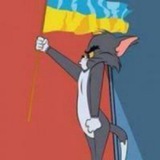group-telegram.com/gistapapapa/109512
Last Update:
Large uncrewed planes such as the Bayraktar still have some uses against insurgents or for hunting submarines, but they have become largely redundant in state-on-state war. It was for this reason during the autumn that Britain announced it was retiring the Watchkeeper observation drone, acquired at a cost of more than £1 billion.
The challenge for Britain is how to grasp the opportunities offered by drones while avoiding expensive white elephants. Barrons argues that the Ukrainian experience has been shaped by that country’s specific limitations, for example lacking air power, large armoured formations or a navy. “Nato is not going to lose control of the air,” he said. “Nato is going to be able to generate land forces that can manoeuvre and assert sea control too.”
Barrons draws a distinction between “denial” and “control”. As weapons such as drones develop, engaging in denial is becoming easier and easier. Well-targeted drones can stop a Russian tank column. Similarly, a single minelayer can deny access to a large area of ocean, whereas gaining control of it requires a naval task force of multiple vessels able to defend themselves against a whole gamut of threats under the water, atop it, or in the air.
The development of drones leading to stasis on thefront lines in Ukraine, a denial of ground, while making it far harder to capture or control it. “The ability to manoeuvre is being overmatched by the ability to spot and kill,” said Matthew Savill, director of military science at the Royal United Services Institute (RUSI).
Barrons argues that increasingly effective countermeasures, from lasers to gunsights designed to shoot down drones, should bring the pendulum swinging back towards mobility, away from the Somme-like sterility of the Donbas trench lines. It is also true that bad weather can ground drones and old-school artillery remains a faster way of engaging targets with destructive barrages.
Barrons also believes that drones are just one part of the bigger question, which revolves around AI robotics and autonomy. The creation, for example, of networks of AI-powered sensors, be they in space or on the battlefield, to allow near-instant identification of enemy forces could upend many current calculations.
In this potentially dystopian vision, uncrewed aircraft or naval vessels might be the only means of reacting fast enough to emerging threats. So, the development of major projects such as the Tempest fighter jet, for which the MoD has earmarked £14 billion, are now subject to uncertainty. People are bound to ask, according to Savill: “Why are we betting on a crewed aircraft that will not be in service for 15 years, when it will encounter advanced AI and sensors in ten years?”
For the Russian air force, surveying the smouldering wrecks of its bombers, this dilemma is doubly difficult. Advanced weapons such as combat aircraft or warships remain highly expensive and take a long time to build. Will they attempt to replace what was lost last week?
Drone fleets can be produced in big numbers with 3D printers and basic components. Even assuming the pendulum does swing away from them eventually, these uncrewed weapons have slowed the war in Ukraine to a near standstill, leaving both sides uncertain of how to gain victory. Drones represent a new chapter in the history of warfare, but one that is still being written daily on the battlefield»
A remark about what everyone is silent about and has not yet spoken about.
The world has changed; it has become much more dangerous. The elimination of world leaders will now be different than before, more technological.
Snipers and poisons are almost useless. All you need is a pilot who can assemble a drone, attach a bomb and hit a car or a window from 50 km away.
We are on the verge of a race between new, more modern drones and reb-as, which will be a must-have for any motorcade, like body armour or weapons.
👇👇👇
BY Фашик Донецький

Share with your friend now:
group-telegram.com/gistapapapa/109512
